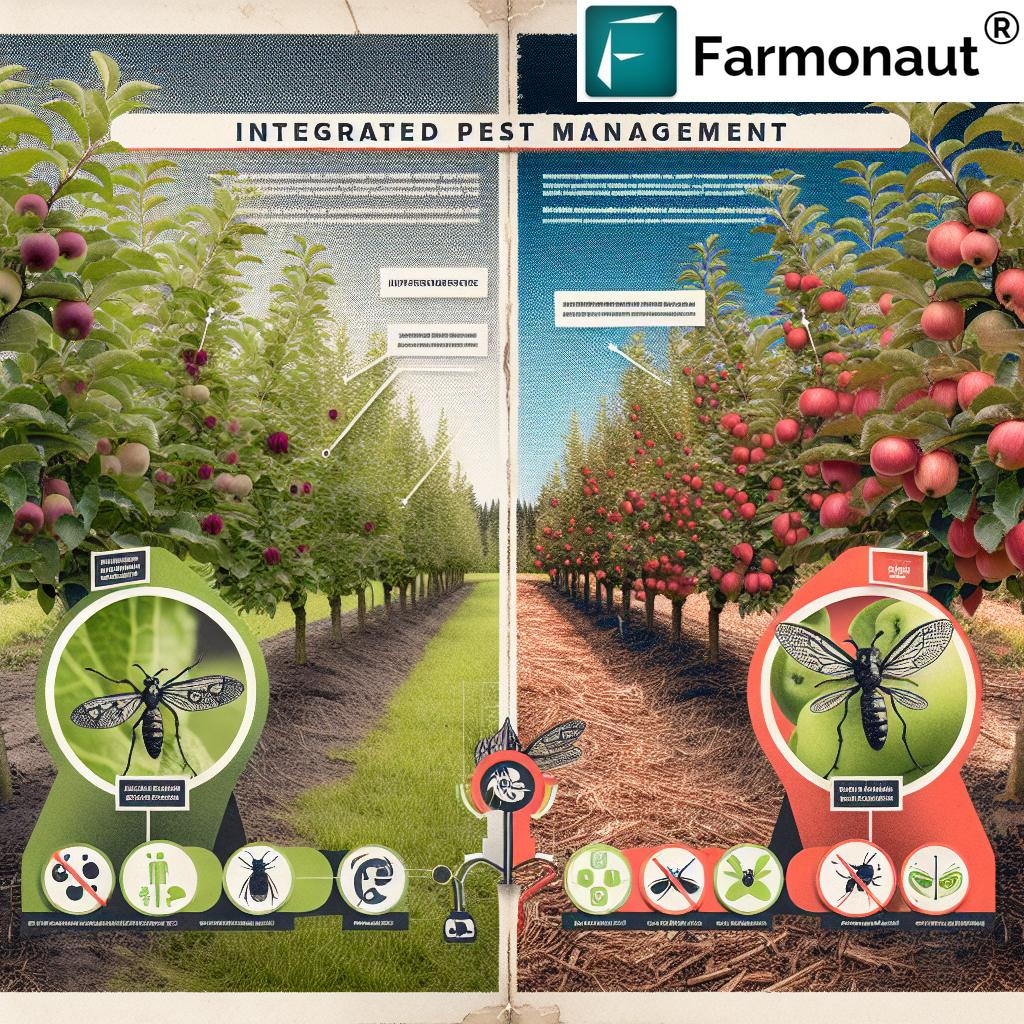Revolutionizing Quebec’s Boreal Forest Management: Balancing Sustainability and Economic Growth with Remote Sensing Technology
“Quebec’s boreal forests sequester approximately 28 billion tons of carbon, equivalent to 100 years of Canada’s GHG emissions.”
Welcome to our comprehensive exploration of Quebec’s boreal forests and the innovative approaches being implemented to manage this vital ecosystem. As we delve into the complexities of forest management in the province, we’ll uncover how cutting-edge remote sensing technology and precision forestry techniques are transforming the way we map, monitor, and conserve these invaluable natural resources.
Quebec’s boreal forests, spanning an area twice the size of France, play a crucial role in carbon sequestration and maintaining biodiversity. However, these forests face significant challenges as the province strives to balance economic needs with environmental conservation. In this blog post, we’ll examine sustainable forestry practices, the impact of climate change on forest biodiversity, and the critical role of indigenous land management in preserving these ecosystems.
The Importance of Quebec’s Boreal Forests
Quebec’s boreal forests are not just vast expanses of trees; they are complex ecosystems that provide numerous benefits to both the local and global environment. Here are some key reasons why these forests are so important:
- Carbon Sequestration: The boreal forests of Quebec act as a massive carbon sink, helping to mitigate the effects of climate change.
- Biodiversity: These forests are home to a wide variety of plant and animal species, including the endangered woodland caribou.
- Economic Value: The forestry sector contributes significantly to Quebec’s economy, accounting for over 50,000 jobs and 1.5% of the provincial GDP.
- Cultural Significance: For indigenous communities, these forests are not just a resource but an integral part of their cultural heritage and way of life.
Given the multifaceted importance of these forests, it’s crucial that we implement management strategies that can sustain both the environment and the economy. This is where advanced technologies like remote sensing come into play.
Remote Sensing: A Game-Changer in Forest Management
“Remote sensing technology has increased the accuracy of forest resource mapping in Quebec by up to 95%.”
Remote sensing has revolutionized the way we monitor and manage forests. By using satellite imagery and other advanced technologies, we can now gather detailed information about forest health, composition, and changes over time without the need for extensive ground surveys.

Here’s how remote sensing is transforming forest management in Quebec:
- Accurate Forest Resource Mapping: Satellite imagery allows for precise mapping of forest resources, including tree species composition, density, and health.
- Monitoring Forest Changes: Regular satellite observations enable the detection of changes in forest cover due to logging, fires, or disease outbreaks.
- Assessing Carbon Stocks: Remote sensing techniques help estimate the amount of carbon stored in forests, which is crucial for climate change mitigation strategies.
- Habitat Analysis: By analyzing vegetation patterns, we can identify and monitor critical habitats for species like the woodland caribou.
At Farmonaut, we understand the power of remote sensing in natural resource management. While our focus is primarily on agricultural applications, the same principles and technologies can be applied to forestry. Our satellite-based monitoring systems and AI-driven analytics could potentially be adapted to support sustainable forest management practices in Quebec.
Precision Forestry: Enhancing Sustainability and Efficiency
Precision forestry is an emerging field that combines remote sensing data with on-the-ground observations and advanced analytics to optimize forest management practices. This approach allows for more targeted and efficient interventions, reducing the environmental impact of forestry activities while maximizing economic benefits.
Key aspects of precision forestry include:
- Tree-level inventory and health assessment
- Optimized harvesting plans based on detailed forest data
- Precise application of silvicultural treatments
- Early detection and targeted management of forest pests and diseases
By adopting precision forestry techniques, Quebec can move towards a more sustainable and economically viable forestry sector. These methods allow for better resource utilization, reduced waste, and minimized environmental impact.
Indigenous Land Management: A Crucial Component
Indigenous communities have been stewards of Quebec’s boreal forests for thousands of years. Their traditional ecological knowledge and land management practices are invaluable in developing sustainable forestry strategies. Incorporating indigenous perspectives and practices into modern forest management is not just a matter of respect; it’s essential for the long-term health of the forest ecosystem.
Some key aspects of indigenous land management include:
- Controlled burning to maintain forest health and biodiversity
- Sustainable harvesting practices that preserve ecosystem balance
- Protection of culturally significant areas within the forest
- Holistic approaches that consider the interconnectedness of all forest elements
By working closely with indigenous communities and integrating their knowledge into forest management plans, Quebec can develop more resilient and sustainable forestry practices.
Climate Change and Forest Biodiversity
Climate change poses a significant threat to Quebec’s boreal forests. Rising temperatures, changing precipitation patterns, and increased frequency of extreme weather events can have profound impacts on forest ecosystems. These changes can affect tree growth, species composition, and the distribution of plant and animal species.
Some of the key concerns include:
- Shifts in tree species ranges, potentially leading to local extinctions
- Increased vulnerability to pests and diseases
- Changes in fire regimes, potentially leading to more frequent and severe forest fires
- Alterations in carbon sequestration capacity of forests
To address these challenges, forest management strategies must be adaptive and forward-looking. This includes:
- Developing climate-resilient forest management plans
- Promoting diverse, mixed-species forests that are more resilient to change
- Implementing strategies to reduce forest fragmentation and maintain connectivity
- Continuous monitoring and research to understand and respond to climate impacts

Balancing Economic Needs and Conservation
One of the greatest challenges in managing Quebec’s boreal forests is striking a balance between economic development and environmental conservation. The forestry sector is a significant contributor to the province’s economy, particularly in rural areas. However, unsustainable logging practices can lead to habitat destruction, loss of biodiversity, and reduced carbon sequestration capacity.
To address this challenge, Quebec is exploring various strategies:
- Sustainable Harvest Practices: Implementing logging methods that mimic natural disturbances and promote forest regeneration.
- Value-Added Products: Focusing on producing higher-value wood products to reduce the volume of timber harvested while maintaining economic benefits.
- Diversification: Exploring non-timber forest products and ecosystem services to create additional economic opportunities.
- Certification Programs: Promoting forest certification schemes that ensure sustainable management practices.
By adopting these strategies, Quebec aims to maintain a thriving forestry sector while preserving the ecological integrity of its boreal forests.
Explore Farmonaut’s API for advanced data analysis
The Role of Technology in Forest Conservation
Advanced technologies are playing an increasingly important role in forest conservation efforts. From satellite monitoring to AI-powered analytics, these tools are enhancing our ability to understand, manage, and protect forest ecosystems.
Some key technological applications in forest conservation include:
- LiDAR Mapping: Using laser technology to create detailed 3D maps of forest structure.
- Drone Surveys: Employing unmanned aerial vehicles for close-range forest monitoring and data collection.
- AI and Machine Learning: Analyzing vast amounts of forest data to detect patterns, predict changes, and inform management decisions.
- Blockchain for Traceability: Ensuring the transparency and sustainability of wood products from forest to consumer.
At Farmonaut, we’re at the forefront of applying these technologies in the agricultural sector. While our primary focus is on farming, many of our tools and approaches could be adapted for forestry applications. Our satellite-based monitoring systems, AI advisory tools, and blockchain traceability solutions could potentially contribute to more effective and sustainable forest management in Quebec.
Carbon Sequestration: Forests as Climate Change Mitigators
Quebec’s boreal forests play a crucial role in mitigating climate change through carbon sequestration. These vast forests act as a massive carbon sink, absorbing and storing carbon dioxide from the atmosphere. Understanding and maximizing this carbon sequestration potential is crucial for both environmental and economic reasons.
Key aspects of forest carbon sequestration include:
- Quantifying carbon stocks in different forest types and age classes
- Understanding how forest management practices affect carbon storage
- Exploring the potential for carbon offset projects in managed forests
- Balancing carbon sequestration with other forest management objectives
By optimizing forest management for carbon sequestration, Quebec can contribute significantly to climate change mitigation efforts while potentially creating new economic opportunities through carbon markets.
Check out our API Developer Docs for integrating forest monitoring solutions
Challenges and Future Directions
Despite the progress made in sustainable forest management, Quebec still faces several challenges in balancing economic needs with environmental conservation. Some of the key issues include:
- Protecting Endangered Species: Balancing logging practices with the need to protect critical habitats for species like the woodland caribou.
- Climate Change Adaptation: Developing strategies to help forests adapt to changing climate conditions.
- Stakeholder Engagement: Ensuring that all stakeholders, including indigenous communities, environmental groups, and industry representatives, are involved in decision-making processes.
- Policy and Regulation: Developing and implementing effective policies that promote sustainable forestry practices while supporting economic growth.
Addressing these challenges will require ongoing research, collaboration, and innovation. As technology continues to advance, we expect to see even more sophisticated tools and approaches for forest management and conservation.
Comparative Analysis of Forest Management Techniques
To better understand the various approaches to forest management in Quebec’s boreal forests, let’s examine a comparative analysis of different techniques:
| Management Technique | Environmental Impact | Economic Impact | Sustainability Score |
|---|---|---|---|
| Traditional Logging | High | High | 4/10 |
| Precision Forestry with Remote Sensing | Low | Medium | 8/10 |
| Indigenous Land Management | Low | Medium | 9/10 |
| Conservation-focused Management | Low | Low | 7/10 |
This table illustrates the trade-offs between different management approaches. While traditional logging may have high economic impact, its environmental impact is also high, resulting in a low sustainability score. In contrast, techniques like precision forestry and indigenous land management offer a better balance between environmental and economic considerations.
The Farmonaut Approach: Innovating for Sustainability
At Farmonaut, we’re committed to leveraging technology for sustainable resource management. While our primary focus is on agriculture, many of our tools and approaches have potential applications in forestry. Here’s how our technology could contribute to sustainable forest management in Quebec:
- Satellite-Based Monitoring: Our advanced satellite imagery analysis could be adapted for forest health monitoring and change detection.
- AI-Powered Analytics: Our Jeevn AI advisory system could be tailored to provide insights on forest management practices.
- Blockchain Traceability: Our blockchain solutions could ensure transparency in the forest product supply chain.
- Carbon Footprint Tracking: Our carbon footprinting tools could be adapted to monitor and optimize forest carbon sequestration.
While we’re not directly involved in forestry at present, we’re excited about the potential for our technology to contribute to sustainable forest management in the future.
Conclusion: A Sustainable Future for Quebec’s Boreal Forests
As we’ve explored in this blog post, managing Quebec’s boreal forests is a complex challenge that requires balancing economic needs with environmental conservation. By leveraging advanced technologies like remote sensing, implementing precision forestry techniques, and incorporating indigenous knowledge, Quebec can work towards a more sustainable and prosperous future for its forests.
The key to success lies in collaboration between all stakeholders – government, industry, indigenous communities, environmental groups, and technology providers. By working together and embracing innovative solutions, we can ensure that Quebec’s boreal forests continue to thrive, providing economic benefits while preserving their crucial role in biodiversity conservation and climate change mitigation.
As we move forward, it’s clear that technology will play an increasingly important role in forest management. At Farmonaut, we’re committed to pushing the boundaries of what’s possible with satellite technology and AI in resource management. While our current focus is on agriculture, we’re excited about the potential applications of our technology in forestry and other related fields.
The future of Quebec’s boreal forests depends on our ability to innovate, adapt, and work together towards a common goal of sustainability. By embracing new technologies and approaches, we can create a future where economic prosperity and environmental conservation go hand in hand.
FAQ: Quebec’s Boreal Forest Management
Q: What are the main challenges in managing Quebec’s boreal forests?
A: The main challenges include balancing economic needs with environmental conservation, protecting endangered species like the woodland caribou, adapting to climate change, and ensuring sustainable logging practices.
Q: How does remote sensing technology help in forest management?
A: Remote sensing allows for accurate forest resource mapping, monitoring of forest changes, assessment of carbon stocks, and habitat analysis, all of which contribute to more informed and sustainable forest management decisions.
Q: What role do indigenous communities play in forest management in Quebec?
A: Indigenous communities bring valuable traditional ecological knowledge and sustainable land management practices. Their involvement is crucial for developing holistic and culturally sensitive forest management strategies.
Q: How does climate change affect Quebec’s boreal forests?
A: Climate change can lead to shifts in tree species ranges, increased vulnerability to pests and diseases, changes in fire regimes, and alterations in the carbon sequestration capacity of forests.
Q: What is precision forestry, and how does it contribute to sustainability?
A: Precision forestry combines remote sensing data with on-the-ground observations and advanced analytics to optimize forest management practices. It allows for more targeted and efficient interventions, reducing environmental impact while maximizing economic benefits.
















